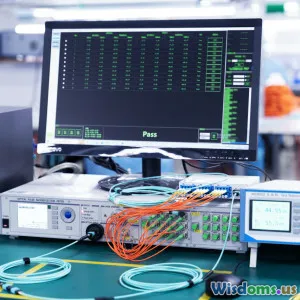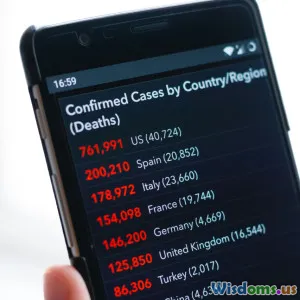
The Future of Automated Exploit Frameworks Who Wins
9 min read Exploring the evolution and impact of automated exploit frameworks in cybersecurity and determining future winners in this high-stakes digital landscape. (0 Reviews)
The Future of Automated Exploit Frameworks: Who Wins?
In the fast-paced digital era, the battleground of cyberspace is continuously evolving. One profound shift shaking this space is the rise of automated exploit frameworks—tools that automate the discovery and exploitation of security vulnerabilities. These technologies are not only revolutionizing hacking but also transforming cyber defense strategies. But the question remains: with automation leveling the playing field, who truly wins in the race between attackers and defenders?
Understanding Automated Exploit Frameworks
Automated exploit frameworks are software platforms designed to autonomously or semi-autonomously discover, develop, and deploy exploits against computer systems. Traditionally, crafting an exploit required deep expertise, painstaking manual coding, and extensive testing. Automation has dramatically lowered this barrier by integrating machine learning, vulnerability databases, and scripting capabilities.
Examples of Prominent Frameworks
-
Metasploit: Undoubtedly the most renowned exploit framework, Metasploit started as an open-source project and now powers much of cyber offense and defense testing across industries. It offers an extensive library of modules automating payload generation and delivery.
-
Core Impact: A commercial tool emphasizing automated penetration testing, it streamlines vulnerability exploitation with a user-friendly interface and sophisticated automation.
-
AutoSploit: Leveraging open-source intelligence and exploits integration, AutoSploit targets exposed systems found through Shodan and other scan data, automating mass exploitation.
These frameworks encapsulate expert knowledge and constantly updated exploit databases, making attack deployment remarkably straightforward for users ranging from script kiddies to professional pen testers.
The Impact on Cybersecurity Landscape
Democratization of Exploitation
Automation hand-lowers the technical bar for exploitation. No longer confined to elite hackers, exploit frameworks enable novices to execute powerful attacks. This democratization poses challenges for organizations:
- An accelerating rate of exploit attempts documented; for example, Symantec reported a 270% increase in automated exploit attack volume between 2018 and 2021.
- Easily available automated tools exacerbate the talent shortage gap in cyber defense, as defenders must cope with more frequent and sophisticated attackers.
Enhanced Red Team Capabilities
For defenders, automated exploit frameworks are not existential threats alone—they are vital tools for simulating attacks, assessing resilience, and continuously improving defenses.
Penetration testers use automation to identify vulnerabilities with greater speed and accuracy. Companies like IBM Security and FireEye integrate these frameworks to conduct simulated breaches at scale, accelerating security maturity.
Machine Learning and AI Integration
Artificial intelligence is the next frontier, enabling frameworks to not only find but craft zero-day exploits dynamically. Research groups have demonstrated AI models that analyze binaries and exploit code to generate novel attack vectors beyond manual human capacity.
A 2022 DARPA challenge showcased AI exploiting previously unknown bugs within hours, spotlighting an emergent era where automated offensive tools could outpace traditional human-driven defenses.
The Battle: Attackers vs Defenders
Attackers Leverage Automation for Scale and Speed
Malicious actors' motivations—to monetize data, disrupt infrastructure, or conduct espionage—push them to adopt automation rapidly.
- Botnets employing automated exploit tools scale ransomware campaigns with unprecedented reach.
- Dark web marketplaces offer ready-made automated exploit kits, accelerating the commercialization of cyberattacks.
Such developments increase the quantity and quality of attacks, often overwhelming vulnerable systems before human defenders can react.
Defenders Respond with Advanced Automation
Security Operation Centers (SOCs) increasingly adopt automated detection and response systems (EDR, XDR) to counteract the volume and velocity of exploits.
There is growing adoption of "automated red teaming," where companies run continuous simulations of cyberattacks using exploit frameworks.
Furthermore, bug bounty programs crowdsource vulnerability discovery leveraging automation to accelerate patch cycles.
The Rise of Offensive-Defensive Synergy
Forward-thinking organizations blur the lines between offense and defense by deploying proactive, automated exploit frameworks internally. This approach fosters resilience and rapid response capabilities, resisting breach attempts more effectively.
For example, Microsoft’s Security Response Center employs customized automated tools to find vulnerabilities internally and in their products before attackers can.
Challenges and Ethical Considerations
While automated exploit frameworks drive innovation, they also raise significant risks.
Weaponization and Proliferation Risks
Automation enables rapid creation and deployment of exploits—if stolen or misused, these capabilities can lead to indiscriminate cyberattacks affecting critical infrastructure.
The 2021 Exchange Server attacks exploited automated tools to compromise thousands of organizations worldwide, highlighting systemic risk.
Regulation and Responsible Disclosure
The cybersecurity community grapples with regulating automated exploit usage without stifling beneficial security research.
Emerging frameworks like Coordinated Vulnerability Disclosure (CVD) protocols aim to ensure that vulnerabilities uncovered by automated tools are responsibly reported and fixed.
Skill Gap and Dependence Risks
Dependence on automation may erode deep technical skills among cybersecurity professionals, making some teams less capable of responding to novel threats outside automated system parameters.
Who Will Win the Automated Exploit Arms Race?
The future of automated exploit frameworks is a complex interplay within cybersecurity ecosystems.
Prospects for Defenders
- Human-AI Collaboration: Defenders augmenting their intelligence with AI-driven automation will enhance detection and mitigation speed.
- Adaptive Cyber Hygiene: Continuous automated penetration testing will embed security deeply into development and deployment lifecycles.
- Global Collaboration: Shared threat intelligence initiatives and open frameworks will reduce asymmetric advantages attackers currently enjoy.
Challenges to Overcome
- Zero-Day Proliferation: Exploits generated by AI could outpace defensive patching ability.
- Automation in Malware: Self-evolving malware driven by automated exploit engines may present unprecedented challenges.
The Winner?
Ultimately, "winning" may not mean eradication of attacks but rather sustained resilience, rapid response, and proactive defense backed by automation.
Organizations investing in smart, ethical automation tools and continuous learning will likely hold the advantage.
Conclusion
Automated exploit frameworks mark a new chapter in cybersecurity's ongoing struggle between attackers and defenders. While they dramatically increase attack capabilities in scale and sophistication, they simultaneously empower defenders through enhanced testing, detection, and response mechanisms.
The future winner in this evolving landscape will be those who embrace automation judiciously—leveraging AI-enhanced frameworks to anticipate and neutralize threats preemptively. Not merely a question of raw power, the race hinges on innovation, collaboration, ethical stewardship, and blending human expertise with advanced technology.
Cybersecurity stakeholders—from governments to enterprises—must prepare for this dynamic shift by investing in automation, training skilled analysts, and fostering transparent information sharing.
With such a balanced approach, the fight against cyber threats can transition from reactive to proactive, creating a safer digital future where both defenders and society at large ultimately win.
Rate the Post
User Reviews
Popular Posts



















